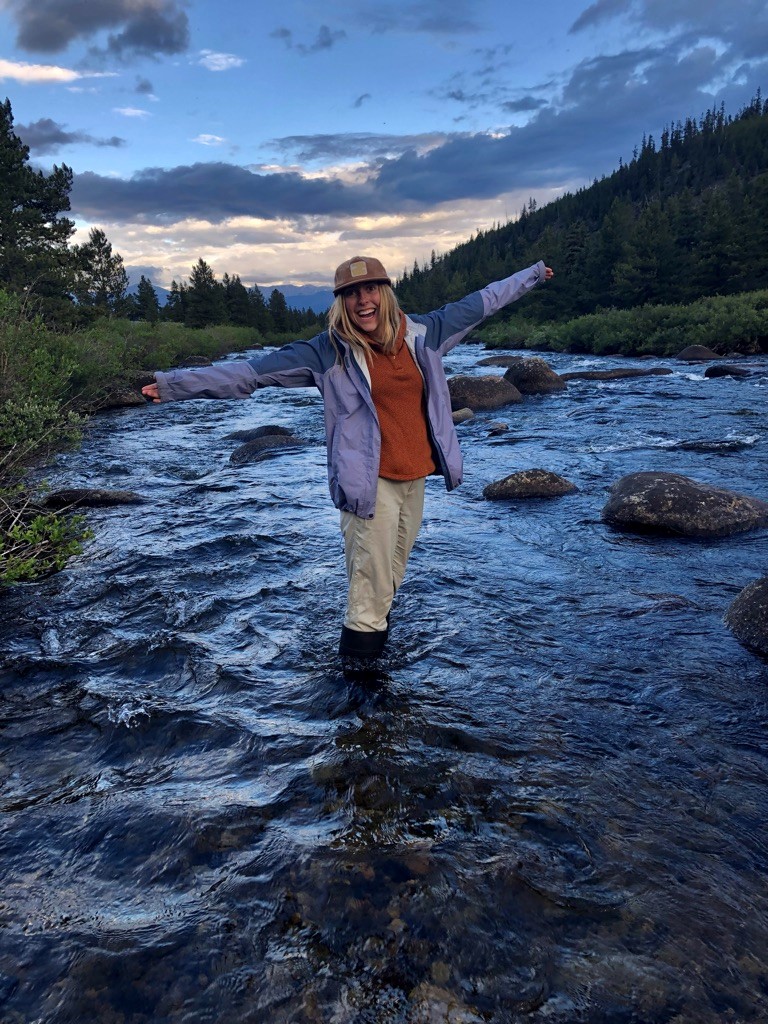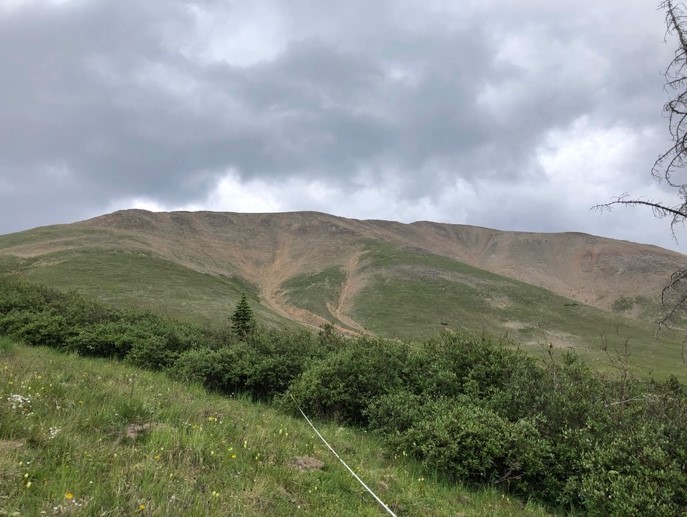Hello, my name is MacDonald Marin and this summer, I had the wonderful opportunity to work for CNHP as a Siegele Conservation Science Intern! As a watershed science major, this internship allowed me to gain invaluable, hands-on field experience, as well as learn about other fields that are not covered in my classes.
I started the internship working on a rare plant monitoring project for Physaria Pulvinata, the cushion bladder pod (pictured above right)! On this trip, I got to see the only two known locations of Physaria, which is a G1S1 plant, meaning it is very rare. It was really neat getting to visit places that not many people know about, and see this super unique plant. I had never worked on any sort of plant monitoring projects before, and this sparked a new interest in botany for me! Although I enjoyed my time working on plant monitoring, my favorite part of the summer was getting to work on the National Wetland Condition Assessment (NWCA). The NWCA is an in-depth area assessment conducted by the EPA every five years to help get an understanding of the health of wetlands across the country. With each NWCA crew, I got to travel to GPS points provided by the EPA and set up transect areas, within which I helped in collecting soil and surface water samples, looked at influences of hydrology, took surveys of plant biodiversity, and looked at the overall health of the site. Each hitch, I got to travel and camp around the states of Colorado and Wyoming surveying wetlands, gaining experience on each part of the protocol; which had everything from how to properly open a cubitainer to telling the difference between a grass and a sedge! One of my favorite assessment sites, CO site 10095, was at the base of Treasure Vault Mountain in the Mosquito Range by Leadville, Colorado. It was at almost 1300 feet, and had an amazing view of Mount Massive! Since the human impacts were relatively minimal in this area, we had a very pristine site, which meant it had some beautiful plant biodiversity, and some really cool hydric soil indicators.
Not only did I learn a lot more about field work and sample collection from working on the NWCA, but I also got to meet and build connections with field techs from all over the country as well as CNHP staff. Each hitch, I got to meet new people, who were all in a similar field to me, and learn about how they decided to work in natural resources, as well as get tips on planning for a career in it. Ultimately, this internship helped me not only solidify a love for the outdoors and wetlands, but also jump started my career in watershed science!
Thanks CNHP!!








